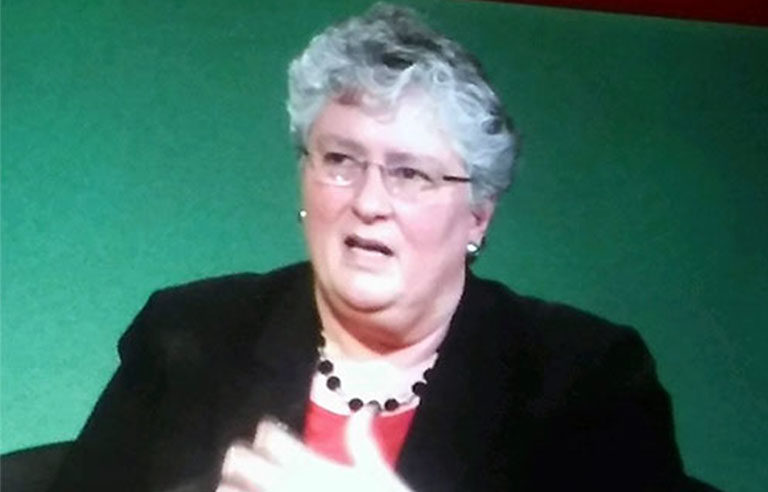Executive Forum addresses how to 'see what's really happening' on the job

Susan L. Koen speaks during the Executive Forum keynote session at the 2016 NSC Congress & Expo
Anaheim, CA – Images of a jaguar, chess pieces and actor Bruce Willis that flashed on a screen Monday during the Executive Forum keynote session, “The Art & (Neuro)Science of Safety,” at the 2016 NSC Congress & Expo appeared to have nothing to do with each other.
Susan L. Koen and Adam Levine thought otherwise.
The panelists admitted such sights might be outside the norm for safety professionals, but used them to illustrate the importance that safety takes when workers operate from the non-thinking, habit-driven part of the brain.
“It actually takes time to activate” the thinking part of the brain, said Koen, an organizational psychologist and CEO and founder of RoundTheClock Resources, a consulting firm based in Portland, ME. “And it takes, more importantly, intention.”
Koen used an example that cited research from a transportation company in which a male train engineer who frequently traveled the same route had driven through a signal indicating him to stop. The engineer said the light was green, but the incident investigation determined the signal was red. Further research, though, supported the engineer’s claim that the signal was green at the same hour of the incident during previous instances when he passed it.
Koen explained that the engineer was working from his “fast brain,” which acts upon expected models and past experiences to essentially make updated information disappear.
“In your workplaces, everyone goes into the job with certain expected models of reality, and we don’t tend to challenge ourselves to kind of wake up, if you will,” Koen said. “So if we’re going to see what’s really happening, we have to activate the conscious part of our brain that can challenge what’s really happening.”
Levine, assistant director of the Toledo Museum of Art in Toledo, OH, stressed the idea that everything a person sees is based on context. To overcome potential biases, then, a person should follow the pattern of looking, observing, seeing, describing, analyzing and interpreting to attain visual literacy.
“Only once you’ve been able to describe and analyze the whole scene do you come to some interpretation of what it means,” Levine said.
Possible cognitive hazards are present elsewhere in workplaces. During the question-and-answer portion of the session, Koen addressed the structure of pre-task worker briefings.
"We unknowingly focus our people in kind of a tunnel-vision way with our message, because we don't realize what we're doing," she said. "And so they pay attention to those big things that you're pointing out, but that actually contributes to them losing broader situational awareness. So we have to know and understand more about that, and know how to message for both things."
Post a comment to this article
Safety+Health welcomes comments that promote respectful dialogue. Please stay on topic. Comments that contain personal attacks, profanity or abusive language – or those aggressively promoting products or services – will be removed. We reserve the right to determine which comments violate our comment policy. (Anonymous comments are welcome; merely skip the “name” field in the comment box. An email address is required but will not be included with your comment.)

